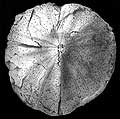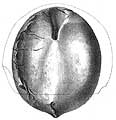The Echinoid Directory
Lampadaster Cotteau, 1889, p. 88
| Diagnostic Features |
|
|---|---|
| Distribution | Late Cretaceous (Campanian-Maastrichtian), Madagascar. |
| Name gender | masculine |
| Type | Lampadaster grandidieri Cotteau, 1889, p. 88, by original designation. |
| Species Included |
|
| Classification and/or Status |
|
| Remarks |
|


